Keith Godard was playful, funny, irreverent, and smart. Decked out in dapper bow ties and bright red shoes, he brought bubbles of joy to every occasion. He and Studio Works, the company he founded in 1986, contributed mightily to life in New York City. His works are preserved in many museum collections, including Cooper Hewitt, Smithsonian Design Museum. This tribute offers an up-close view of some of Godard’s most memorable works.
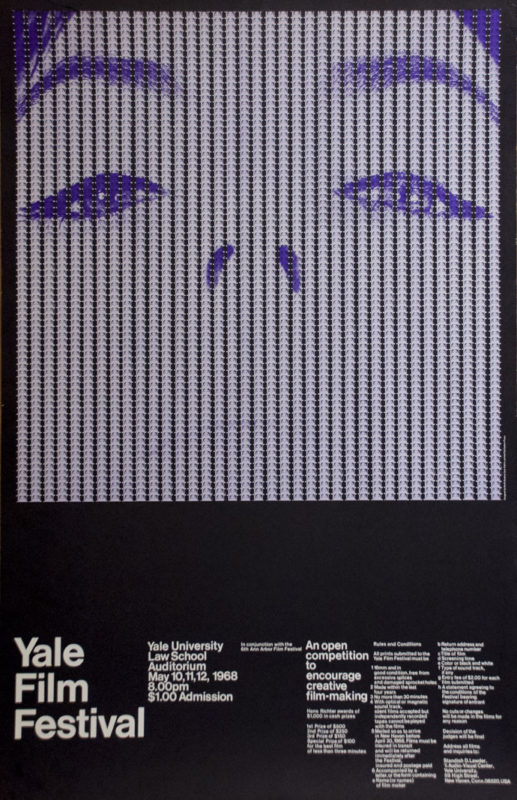
Poster, Yale Film Festival, 1968; Designed by Keith Godard (American, born England, 1942–2020) for Yale University (New Have, Connecticut, United States); Offset lithograph on paper; H x W (Approx.): 96.5 × 61.9 cm (38 in. × 24 3/8 in.); Gift of Various Donors; 1981-29-146
He studied graphic design at the London College of Printing and Graphics Arts before crossing the pond to work with Paul Rand and others at Yale University School of Art and Architecture, where he earned an MFA in Graphic Design. The Yale graphic design program was known for its rigorous adaptation of European modernism; Godard’s 1968 poster for the Yale Film Festival shows his mastery of clean structural design solutions. It also shows his sense of humor, as he builds a giant face from a texture of repeated stills.
After grad school, Godard moved to New York and immersed himself in the city’s vibrant design scene. He collaborated with many museums and cultural institutions, including Cooper Hewitt, which moved from Cooper Union to the Carnegie Mansion on 91st Street in 1970. Cooper Hewitt collaborated with Godard to organize Immovable Objects in 1975, an outdoor exhibition located in the streets of Lower Manhattan. In Godard’s screenprinted poster, the exhibition title swirls by on a ticker-tape banner as a technicolor sunset settles over the city.
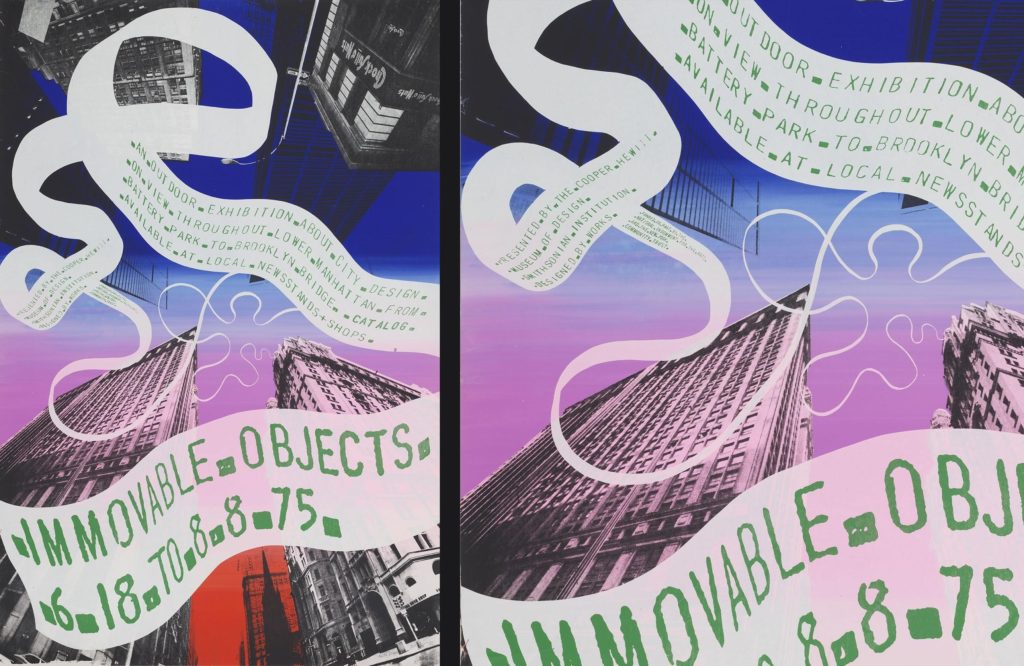
Poster, Immovable Objects, 1975; Designed by Keith Godard (American, born England, 1942–2020) for Cooper Hewitt, Smithsonian Design Museum (United States); Screenprint on paper; 116.8 × 79.4 cm (46 × 31 1/4 in.); Gift of Unknown Donor; 1980-32-1083
For Godard, New York was a constant source of inspiration. In this poster for Columbia University Graduate School of Architecture and Planning, Godard filters the skyline through a transparent scrim of celluloid film. Not satisfied with a flat and static image, he let the strips of film ripple and curl across the top of the poster, where we discover they have been marked and sorted by a film editor.
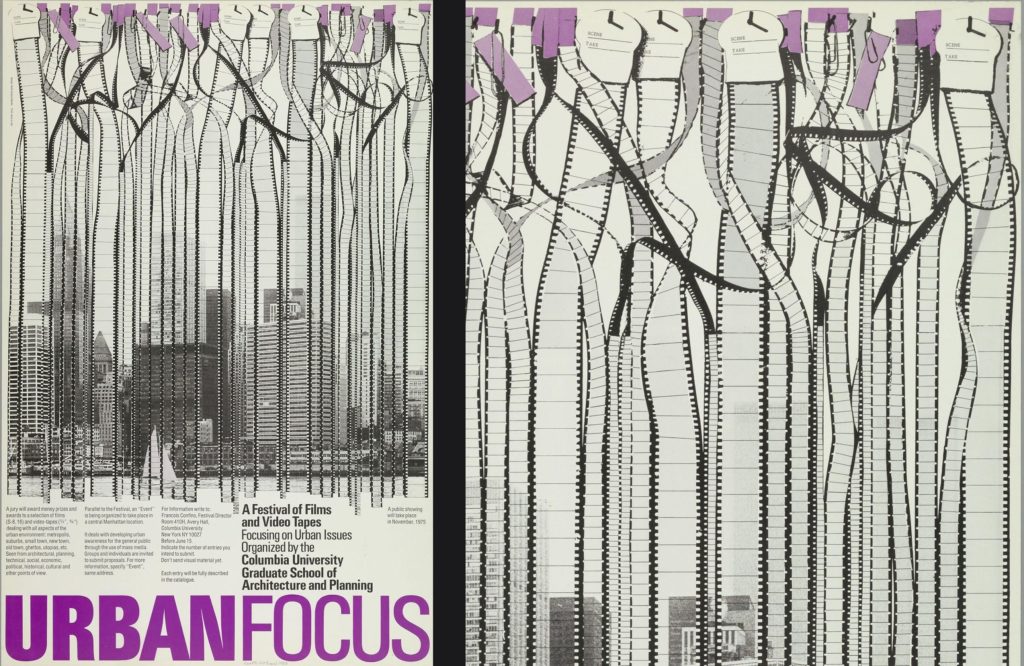
Poster, Urban Focus, 1975; Designed by Keith Godard (American, born England, 1942–2020) for Columbia University Graduate School of Architecture and Planning (New York, New York, USA); Print on paper; approx.: 95.9 × 62.2 cm (37 3/4 × 24 1/2 in.); Gift of Various Donors; 1981-29-66
To create his poster Picnic in Los Angeles, Godard montaged dozens of tiny white balloons over an aerial view of the city to spell out the name of the event. The title is printed backwards because Godard imagined people on the ground looking up from the tiny green park—the poster’s only patch of color—to read the text floating in the sky.
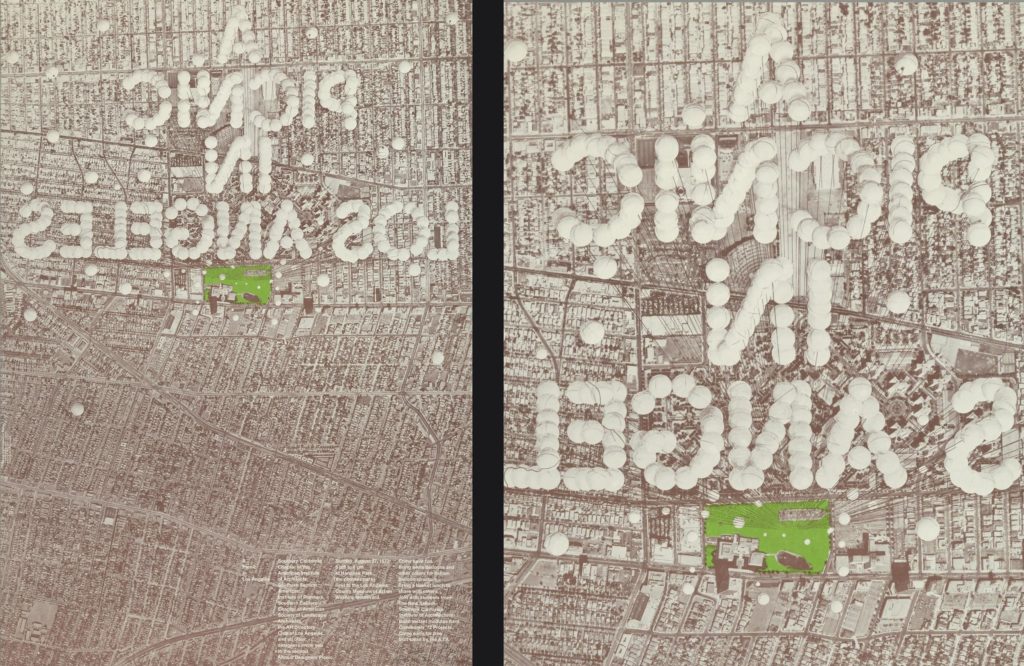
Poster, A Picnic in Los Angeles, 1972; Designed by Keith Godard (American, born England, 1942–2020); Offset lithograph on paper; 87.1 x 61.7 cm (34 5/16 x 24 5/16 in.); Gift of Keith Godard, 1991-69-28
Hocus Focus is a die-cut poster created for the Staten Island Children’s Museum in 1979. Holes cut into the poster become eyes, inviting kids to cut up the poster and turn it into masks.
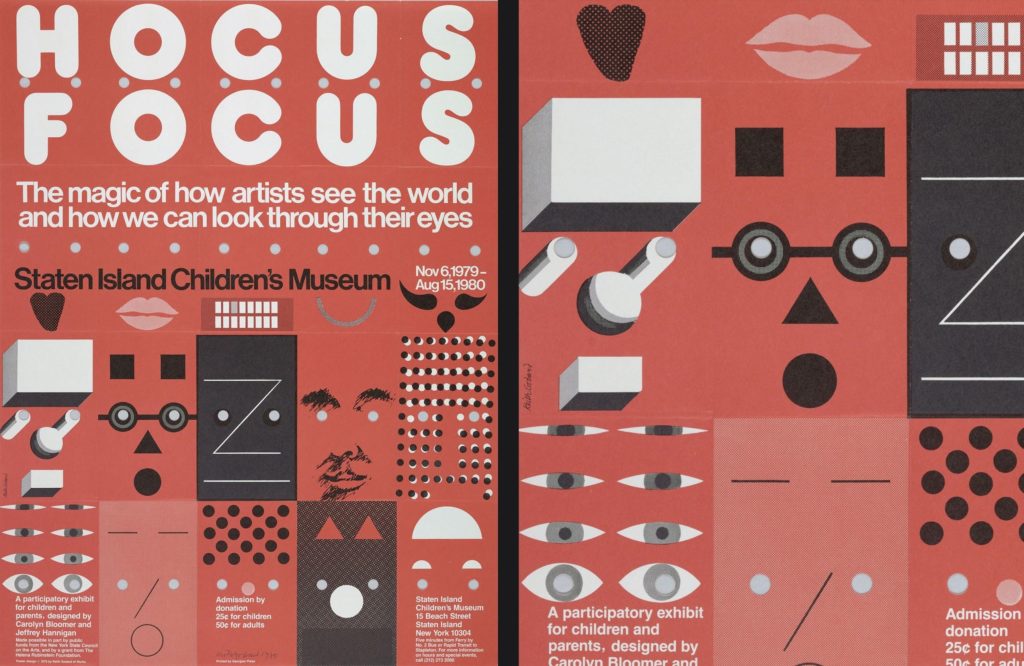
Poster, Hocus Focus, 1979; Designed by Keith Godard (American, born England, 1942–2020) for Staten Island Children’s Museum (Staten Island, New York, USA); Print on die-cut paper; Gift of Various Donors; 1981-29-364
Godard loved physical interaction. He designed many exhibitions and installations as well as works in print. His most enduring project is the mural he designed at the 23rd Street subway stop of the R train in Manhattan. The piece depicts hats worn by famous people who passed through the neighborhood from the 1880s through the 1920s, when this bustling district was a center of the fashion industry. In Godard’s mural, distinctive hats worn by the likes of Eleanor Roosevelt and Harry Houdini are rendered in glass mosaic tiles, floating at head height along the wall of the platform.
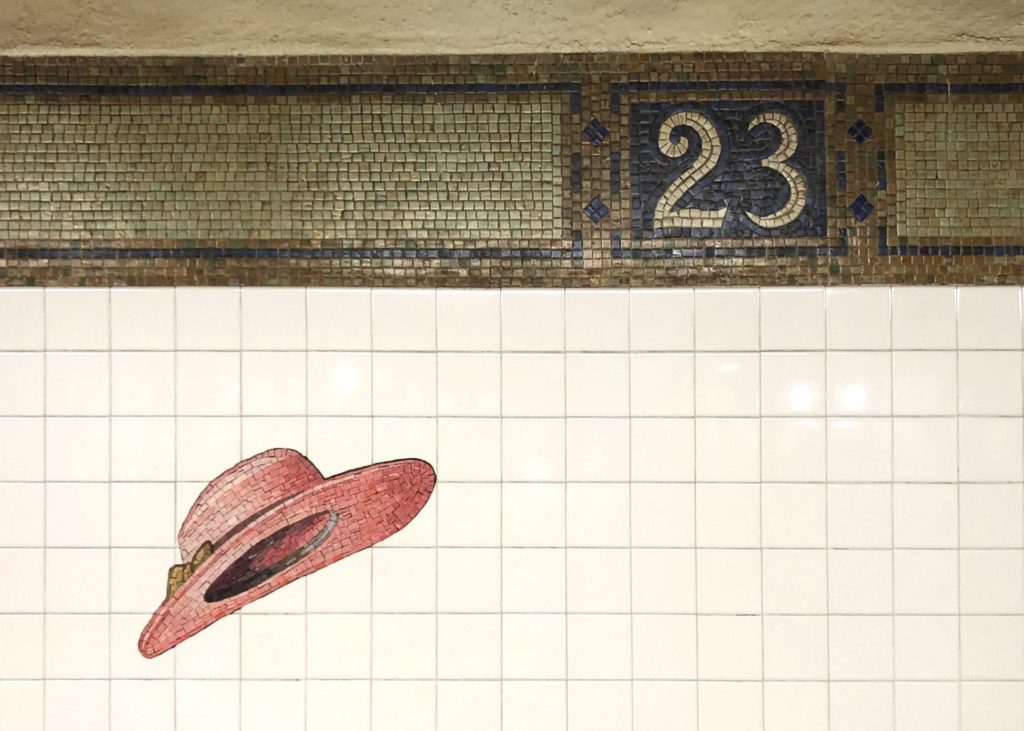
R train, 23rd Street, Designed by Keith Godard (American, born England, 1942–2020), Memories of Twenty-Third Street, 2002, Glass mosaic on platform walls. Photograph by Jennifer Tobias
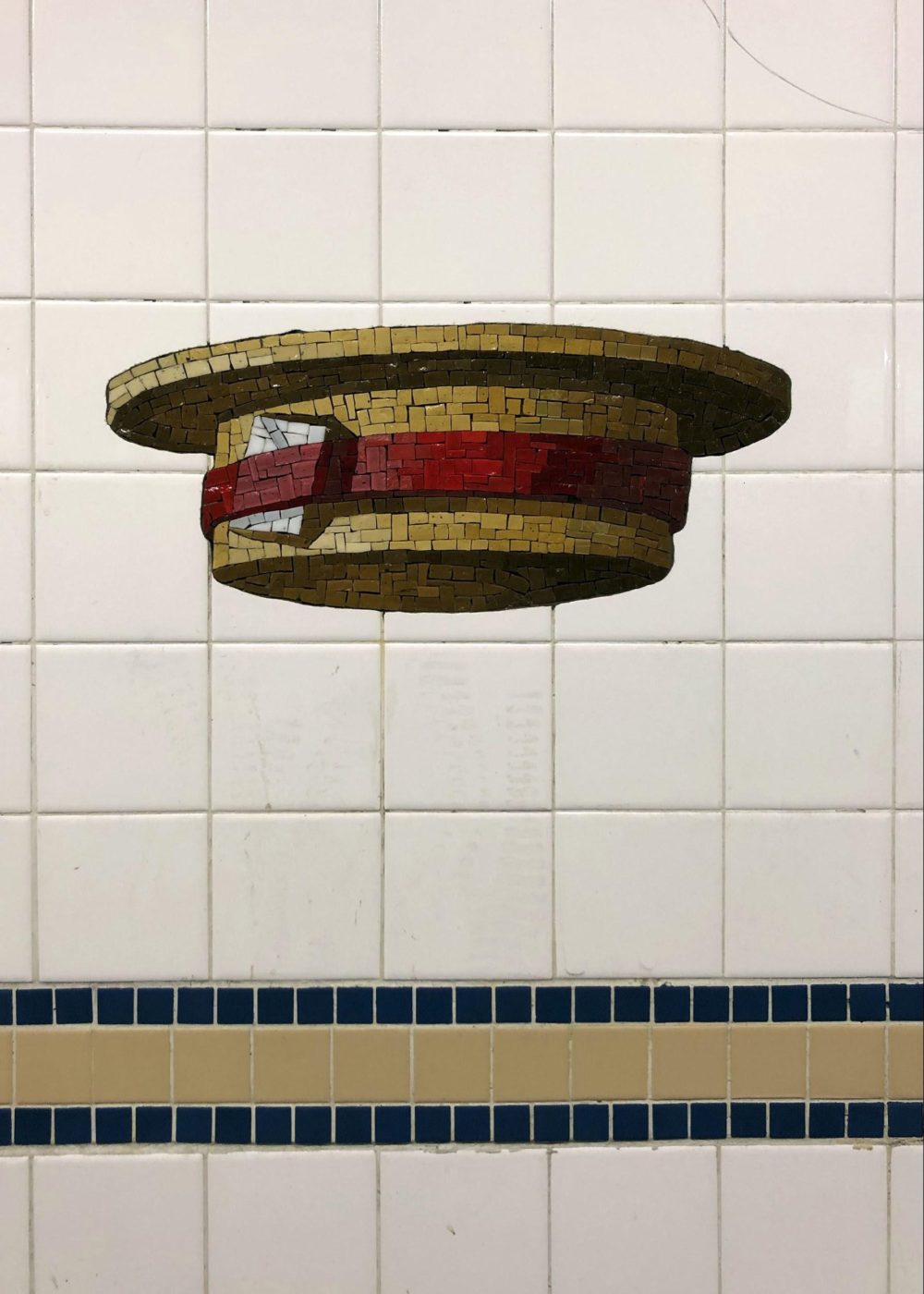
R train, 23rd Street, Designed by Keith Godard (American, born England, 1942–2020), Memories of Twenty-Third Street, 2002, Glass mosaic on platform walls. Photograph by Jennifer Tobias
Keith Godard was a great friend to Cooper Hewitt. His work conveys endless enthusiasm for life and has left a permanent mark on the city he loved so much. Something is always happening in his posters and projects, which play with dimension and movement, physicality and fantasy. An extensive digital archive of his work is on view in the Milton Glaser Study Center and Archives at the School of Visual Art.
Ellen Lupton is Senior Curator of Contemporary Design at Cooper Hewitt, Smithsonian Design Museum and Director of the Graphic Design MFA program at Maryland Institute College of Art.